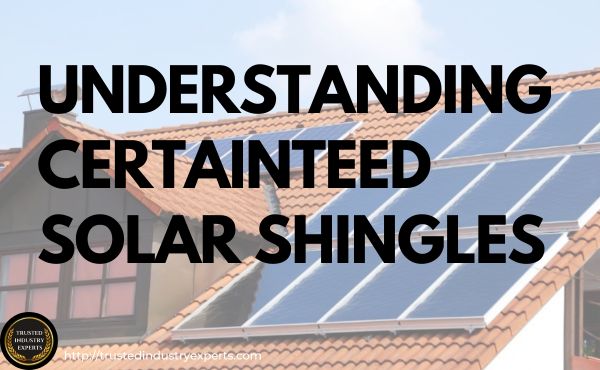
Understanding CertainTeed Solar Shingles
The sun is a powerful, natural resource that can be used to generate clean energy for your home. And with CertainTeed solar shingles, you can do just that—all while improving the appearance of your roof! In this blog post, we’ll discuss the benefits and how they can help you take advantage of this renewable energy source.
If you’re considering getting solar shingles for your home, it’s important to know that they are designed to withstand a variety of weather conditions. That’s why they are so popular—they come with the promise of durability and strength.
Let’s take a look at how these high-quality materials make them resistant to extreme weather conditions such as strong winds, hail, and heavy rain.
At first, the thought of a roof that can provide power to your home may seem like something out of a science fiction movie. But with CertainTeed solar shingles, that dream is now a reality! These revolutionary solar shingles are made with high-quality materials and designed to withstand extreme weather conditions, making them durable and long-lasting. Keep reading to find out more about why you should consider adding them to your home.
Also, they are a great way to reduce your home’s carbon footprint and help you save on energy costs. Among the many Apollo ii shingle options available in the market, CertainTeed solar shingles stand out for their durability, efficiency, and aesthetic appeal.
As the world moves toward renewable energy sources, solar shingle have become an increasingly popular option for homeowners looking to reduce their energy bills and lower their carbon footprint. Among the two solar shingle options available in the market, CertainTeed solar shingles stand out for their durability, installation costs, efficiency, and aesthetic appeal.
Solar Roof Shingles vs. Solar Roof Panels
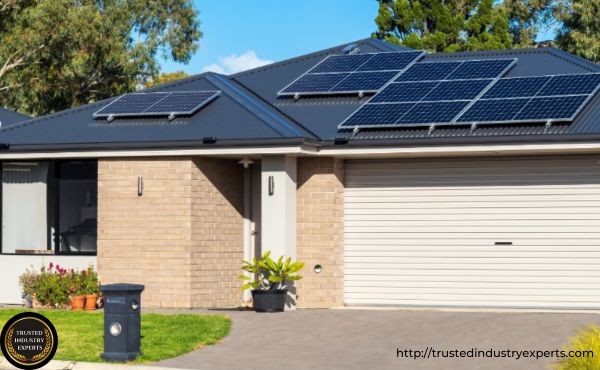
The solar roof is designed to absorb the sun’s radiation and convert it to electricity or thermal energy. It is important to understand some of the important differences when it comes to solar power.
For homeowners who are considering switching to solar power, it is important to understand some of the key differences between traditional shingles and panels. Both are designed to absorb the sun’s radiation and convert it into electricity or thermal energy, but there are important distinctions that should be taken into account. Let’s dive in and compare these two types of solar roofing systems.
Solar are one of the most popular forms of solar energy. These photovoltaic cells are thin and lightweight, making them easy to install on a variety of existing roof. Additionally, they look like traditional asphalt shingles and come in a variety of colors and styles, so they can easily blend in with your home’s existing aesthetic. They’re also relatively affordable compared to other types of solar panels, though their efficiency is lower than conventional designs.
Solar panels, on the other hand, offer high efficiency ratings than their shingle counterparts. This means that fewer panels need to be installed in order to generate the same amount of power as a traditional system. However, they require more installation time due to their larger size and weight—and because they have a distinct appearance that doesn’t necessarily blend in with existing roofs, they may not be allowed by certain local governments or Homeowners Associations (HOAs).
How much do CertainTeed solar shingles cost?
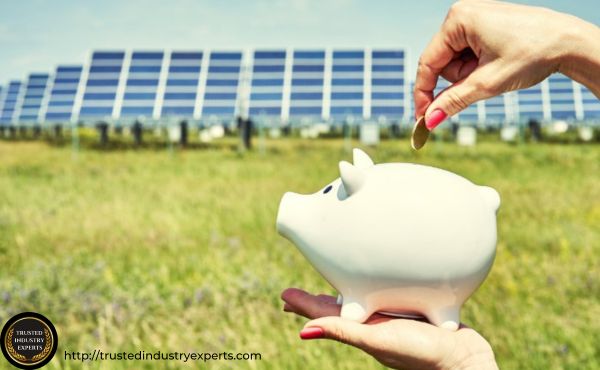
Thinking about going solar? If you’ve been considering CertainTeed Solar Roofing in solar industry, you may be wondering: how much will it cost? While CertainTeed’s solar shingles hasn’t listed its own official prices and there are no online quotations, we can make an educated guess. Read on to find out what you should expect.
What is certain about the cost of CertainTeed Solar Roofing?
CertainTeed has said that solar tiles cost over $65000 for the average installation on the roof. So it stands to reason that installation of CertainTeed roofs would be about $65,000. That being said, the price for CertainTeed shingles is similar to that of an electric roof, but the overall cost will vary according to the dimensions of your roof, your electric consumption and your installer.
What are some factors that could influence the price I pay?
The size of your roof plays a huge role in determining how much you’ll pay for installation. The bigger your roof is, the more materials and labor it requires—which ultimately means a higher bill. This isn’t just true for solar roofs; any kind of roof — electric or otherwise — requires more resources if it covers a large area. Electric consumption also matters; if you use more electricity than average, then you may need extra panels to meet your needs—which will increase costs accordingly. And finally, installers can have different rates; when selecting yours, make sure to compare prices from multiple contractors before making a final decision.
Overall, installing CertainTeed Solar Roofing can be expensive — but it could save you money in the long run by reducing your energy bills and possibly even providing tax credits or other incentives from local governments. If you’re serious about transitioning from traditional electricity sources to solar power, then working with CertainTeed is an excellent option worth exploring further — just remember to shop around for contractors and ask plenty of questions before signing anything! Good luck with finding the perfect fit for your home’s energy needs!
Does the CertainTeed solar roof qualify for the solar tax credit?
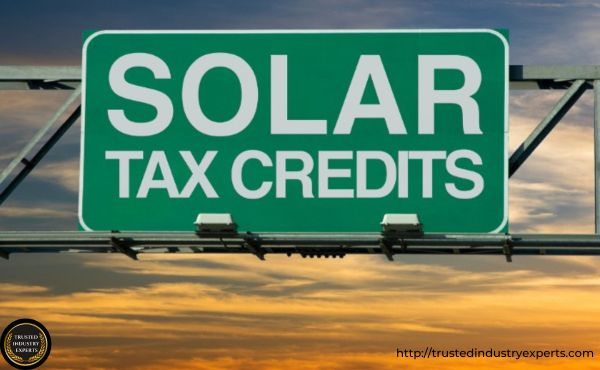
SureTeed solar shingles qualify for 30 percent federal solar tax credits. This is only applicable to the cost related to concrete tiles roofs. Roof repairs cannot be credited. Your solar installer should have an answer for you as to whether your installed costs are eligible for this federal tax deduction.
When considering a solar roofing system, the last thing you want to hear is that you won’t be eligible for a federal tax credit. But don’t worry—the CertainTeed Solar Roof does qualify for 30 percent federal solar tax credits! However, it’s important to know what costs are and aren’t eligible for this deduction. Let’s explore this further.
What Is The Federal Tax Credit?
The federal tax credit is a 30 percent deduction of the total costs of your solar roof installation. This includes the cost of materials and labor associated with installing the solar roofing system. It cannot be applied to any repairs or maintenance related to your roof. Additionally, you must have an itemized receipt from your installer in order to qualify for the credit—you can’t just submit your monthly energy bill as proof of purchase!
How Does The CertainTeed Solar Roof Qualify?
The good news is that the CertainTeed Roof tiles does qualify for the federal tax credit! This means that when it’s time to file taxes, you can deduct up to 30 percent off the cost of your solar roofing options and installation. Be sure to double check with your installer that all necessary paperwork has been filed correctly so that you can receive this deduction come tax season!
The federal tax credit is an excellent way to save money on your new CertainTeed Solar Roof installation. With this credit, you could potentially save up to 30 percent off the cost of installation. To ensure that you’re eligible for this deduction, make sure all paperwork has been submitted correctly with your installer and keep an itemized receipt on hand in case it’s needed when filing taxes next year. With these simple steps, you’re well on your way toward taking advantage of this generous solar incentive!
Roofing Permits
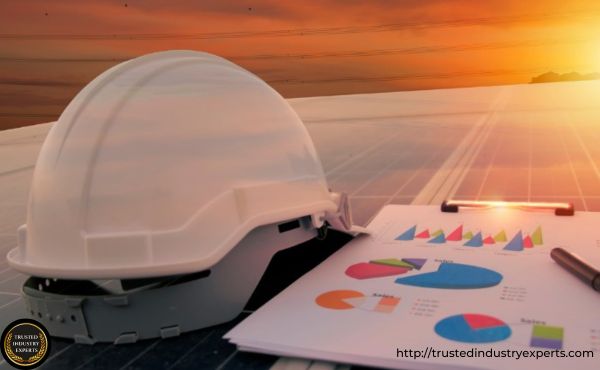
Are you a homeowner looking to install solar roof tiles or tiles on your roof? Not so fast—you should know that the installation of these requires building permits in many areas. So, what does this mean for you? We’ll break down everything you need to know about obtaining permits for solar shingle and tile installations, so read on!
Solar shingling or tile requires a building permit for many of the areas. A permit office for the residence can give more details. On average it will cost you between $250 and $1600 per permit on roofing.
What are Solar Shingles and Tiles?
Solar shingles and tiles are photovoltaic (PV) materials that can be installed like traditional roof shingles or tiles. They can also be used as an alternative to traditional rooftop solar panel systems, since their design allows them to blend in seamlessly with roofs. As an added bonus, they reduce air conditioning costs by keeping heat out of your home.
Do I Need a Permit?
In most areas, installation of these solar Apollo tile II products requires a building permit from the local permitting office. The cost of the permit will vary depending on where you live, but typically it will cost between $250 and $1600 per permit. It’s important to note that if you don’t get the proper permits, any resulting fines can be significantly more expensive than the cost of the permit itself.
How Can I Get Permitted?
The best way to get started is by contacting your city or county’s permitting office; their staff will have all the information you need regarding regulations in your specific area. Additionally, they should be able to tell you what documents they need from you in order to process your application for a building permit. It’s always best practice to contact an experienced professional electrician who can help guide you through the entire permitting process from start to finish.
If you’re looking for an alternative energy source for your home, solar shingles and tiles may be a great option. However, before taking the plunge make sure that you check with local officials in order to determine whether or not installing these solar roof products requires a building permit and a full roof replacement—doing so could save you time and money down the road! You should also contact an experienced electrician who can help guide you through each step of acquiring a building permit; this will ensure that everything is done correctly and that your installation is up-to-code with all applicable regulations. Understanding what’s involved when getting permitted will help make sure that installing solar shingles or tiles on your roof is as easy as possible!
What are solar shingles, and how do they work?
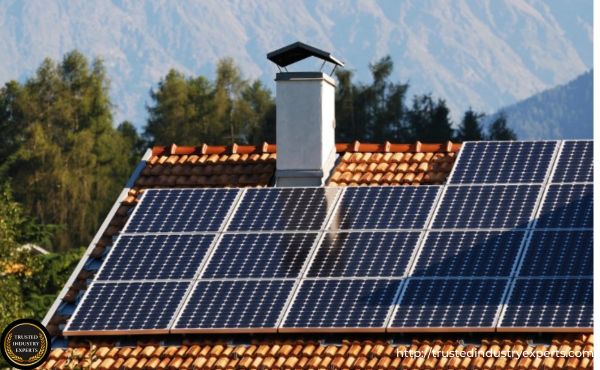
Let us take a look at CertainTeed credentialed solar installers and products to get some insight. In simplest terms, solar shingles are tiny traditional solar panels. This small size allows it to fit in to your existing roofing tiles and is less noticeable. One important difference was in the installation procedure. Solar shingle are generally installed flat against roofing surfaces to give them a lower profile. Solar tiles cells in contrast are oversized 5-foot squares arranged with racks installed over your roof.
Solar energy is becoming increasingly popular in homes around the world and on solar companies. It is a clean, renewable energy source that can be used to power your home, reducing your reliance on fossil fuels. One of the most popular forms of solar energy is solar shingles. Solar shingles are small solar cells that can be added to roof tiles to create a roof that produces electricity from the sun’s rays. In this article, we will take an in-depth look at certain teed Aapollo ii solar shingle and how they work.
What are Solar Shingles?
Bulky Solar panels asphalt shingle roofs are small photovoltaic (PV) cells integrated into a thin film material or laminate that looks like traditional asphalt roofing tiles. The cells capture sunlight and convert it into electricity, which can then be used to power your home. Unlike traditional Apollo ii solar shingle and Apollo II system, which have bulky frames and racks that need to be installed separately over your existing roof, apollo ii solar shingles and Apollo II system are installed directly onto your existing roof tiles in much the same way as regular tiles. This makes them more aesthetically pleasing and less noticeable while simultaneously providing you with renewable energy for your home.
How do Solar Shingles Work?
Apollo ii Solar shingles and Apollo II system work by capturing light from the sun and converting it into usable energy through a process called photovoltaics (PV). PV cells contain two thin layers of semi-conductive material such as silicon or gallium arsenide, with each layer having a different electrical charge. When sunlight hits these layers, electrons are released and generate an electric current that can be used for powering appliances or charging batteries for later use. The amount of electricity generated depends on the amount of sunlight available during any given day and can range from several hundred watts per square meter in direct sunlight up to several thousand watts per square meter in bright sunshine.
Both Solar shingles provide homeowners with an efficient, cost-effective way to produce renewable energy from their own roofs without sacrificing aesthetics or comfort levels inside their homes. They offer an attractive alternative to traditional large-scale solar panel installation process that require separate frames and racking systems to be installed over your existing roof structure. If you’re looking for an efficient way to reduce your carbon footprint while also saving money on electricity bills each month, then investing in CertainTeed traditional solar panels may just be the right choice for you!
The Benefits of CertainTeed Solar Shingles
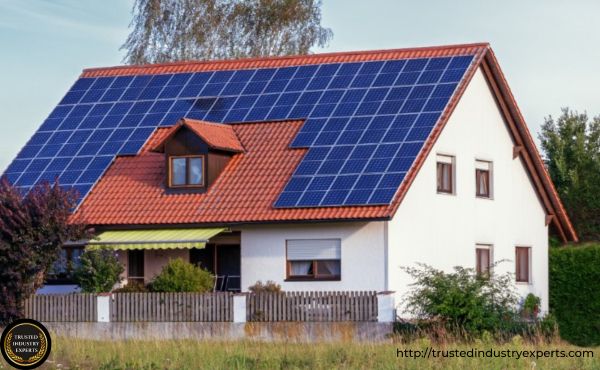
Solar cells panels shingle provide many benefits, such as reducing your environmental impact by decreasing your reliance on fossil fuels. They also help to reduce your energy cost significantly—in fact, some homeowners have reported reducing their bills by up to 50%.
Long-Term Benefits
Investing in conventional solar panels energy and solar technology is one of the smartest decisions you can make for your home or business. CertainTeed solar shingles, like many other solar system, are designed to provide reliable energy for up to 25 years—a lifetime of conversion efficiency and savings. With a lifespan that long, it’s no wonder that more people are investing in this renewable energy source. Let’s break down some of the long-term benefits of investing in solar panels power.
Financial Benefits
One of the primary reasons people invest in solar system panels power is because it saves them money on their electricity bills. Because the sun is a free and abundant resource, you won’t have to worry about paying for expensive fuel sources or rising electricity prices. In addition, most states offer incentives for those who invest in renewable energy sources, meaning that your initial investment could be offset by tax credits or rebates. Over time, you will save even more money as your system continues to produce clean energy at no cost to you. Certain Teed concrete roofing tiles are an excellent choice for those looking to transition from traditional electricity sources to solar power. Not only do they offer financial benefits in the form of reduced energy bills and possible tax credits or other incentives, but they also provide a clean and renewable energy source that can last up to 25 years. To take advantage of these long-term benefits, make sure you contact your local permitting office before installation so that you know what documents they need from you as well as any applicable regulations. Additionally, it’s always best practice to work with an experienced electrician who can help guide you through each step of acquiring a building permit—this will ensure that everything is done correctly and safely! With this knowledge in hand, you’re now ready to start exploring how CertainTeed Solar Shingles could be the perfect
Conclusion:
Solar shingles are an efficient, cost-effective way to produce renewable energy from your home’s roof without sacrificing aesthetics or comfort. They offer a more aesthetically pleasing alternative than traditional solar panel systems and can generate significant savings on electricity bills each month. Furthermore, they come with the added benefit of long-term financial rewards in terms of tax credits and other incentives offered by some states. With all these benefits combined, it’s no wonder that more people are investing in CertainTeed Solar Roof! To get started exploring how this technology could be right for you, make sure to talk to an experienced electrician who can help guide you through the process of acquiring building permits as well as any applicable regulations. With their expertise at hand, you’ll soon be ready to start enjoying the many advantages of clean energy produced by CertainTeed Shingles!
Go Solar with Trusted Industry Experts and Contact us here
#Solarpower #RenewableEnergy #Sustainability #CleanEnergy #EnvironmentallyFriendly #GoGreen #HomeImprovement #SolarShingles #CertainTeedSolarRoofs #TaxCreditSavings #MoneySavingInvestment #LongTermBenefits



